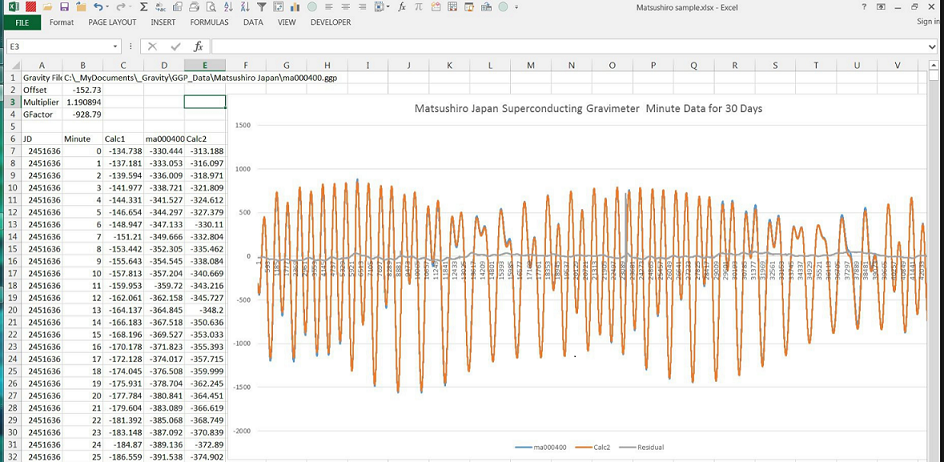Why the sun moon tidal signal is so important for helping global sensor arrays with calibration
Shawn,
I worked with the US Agency for International Development, the US State Department, World Bank and many international organizations. Most countries cannot afford to do their own mineral exploration, so outsiders come and take what they have.
I helped put microcomputer training and technology into that system so that some countries could afford to do their own research and management. It needs more than that, but it helped a little.
Small companies, small countries, small schools, small universities, small groups, or large ones but with few resources. Lots of problems in the world. That is why I was still trying to encourage development of low cost gravitational detectors –
Low Cost, Time-of-Flight Gravimeter Arrays
Now, that group at Hackaday.io is not large. And they are retirees, part timers, students, and hobbyist, inventors and other things. But they sometimes come up with good stuff.
I went through almost every possible way to measure acceleration, and to directly measure the pressure or energy density of the gravitational potential field. I looked at cameras because the electrons in them have mass and the device can be used as an accelerometer or electron interferometer. I looked at memory chips, because the floating gates are islands of electrons and holes and their statistics are affected by acceleration fields. I looked at particle accelerators because they have to correct for earth tides, I looked at fission reactors because the neutron statistics should be affected by the changing gravitational acceleration and potential. At fusion experiments because the energy density of the gravitational field at the surface of the earth is roughly equal to a magnetic field of 379 Tesla. At all the “quantum” experiments because they are all using exactly the same tools and methods needed to measure the gravitational field. At all the “big G” experiments because they drift more than they should, and could be locked into the sun moon tidal signal and have a chance at global standardization. But it is me learning all those different ways of looking at the world. I wish they would do their own jobs and let me help a little.
You can think of a body being accelerated. But you can also keep the body fixed, and more the rest of the universe. Then the body sees a changing acceleration field. More particularly, it sees a flow of moment of many tiny particles or fluctuations in the vacuum that could be called gravitons.
I will see if I can pick a few of the better methods and try to build you a cheap gravimeter array. I won’t ignore the Mossbauer methods and atomic clock methods that can directly measure the speed of light in vacuum. That changes everywhere in the universe as the gravity, velocity, magnetic fields, pressure, temperature, electric field, electromagnetic field — change.
It isn’t fair that I have to do it alone. I don’t want anything except to see the inside of the earth, moon, sun and planets. To see the detailed image and composition and properties of the inside of things. There are LOTS of models to compare with and calibrate.
Richard Collins, Director, The Internet Foundation
See that gray line in the middle of this month long record from a superconducting gravimeter? That is the residual after removing the sun moon tidal signal. The SMTS is all that the sun and moon and earth rotation contribute. The residual is all that is left from the earth. Is is roughly 50 nm/s2 or 5 microGal. That is the noise level in your gravimeter.
Do you see the entries in B2 and B3? That is ALL that is needed to fit the theoretical Newtonian vector gravitational acceleration to ANY gravimeter on earth. The constants are the GM for the sun, GM for the moon, GM for the earth, station location, and the positions of the centers of the earth, moon and sun over time. The NASA Jet Propulsion Laboratory provides that information in precise and fairly easy to use form. It can be run off the Internet. And anyone, anywhere can use that to work out where they are, what direction their sensor is pointing.
This is just the vertical axis, but ALL THREE AXES follow this same pattern. it only requires a linear regression for each axis, SIX NUMBERS! It is so amazing, but I can’t get anyone to even try it. I call it “gravitational GPS”. But it also gives orientation. And when you are able to measure that, the next step is to measure the speed of gravity, and then you have enough sensitivity and capability for a gravimeter imaging array.
I know how to convert gravitational signals to magnetic or electric fields, or temperature fields, or electromagnetic fields, or acoustic fields, or electron density fields, or plasma fields. Any possible configuration of matter, there is one set of units and basic relations. And all the sensor technologies are just variations on the basic theme. So a seismometer can also measure gravity. A magnetometer, or thermometer, or barometer — all the sensors are just picking up variations in the underlying vacuum field. It works. The numbers work out. But no one seems to care but me. LOL! Such a life.
